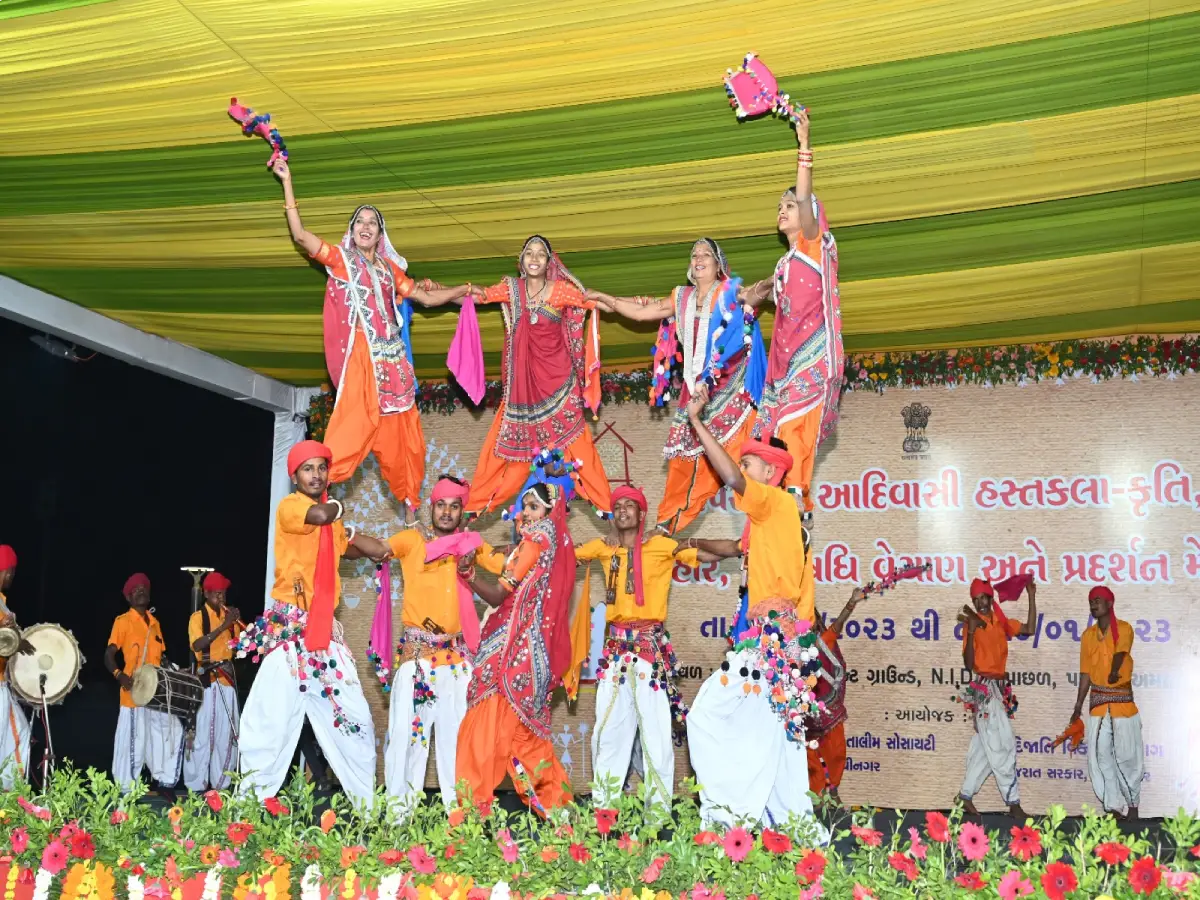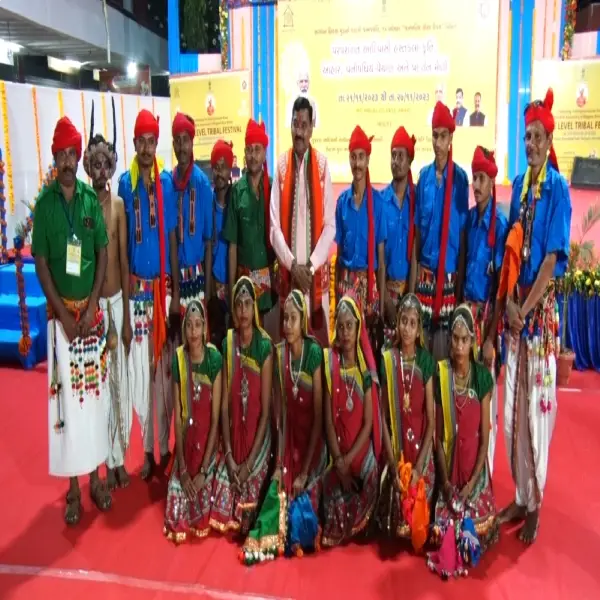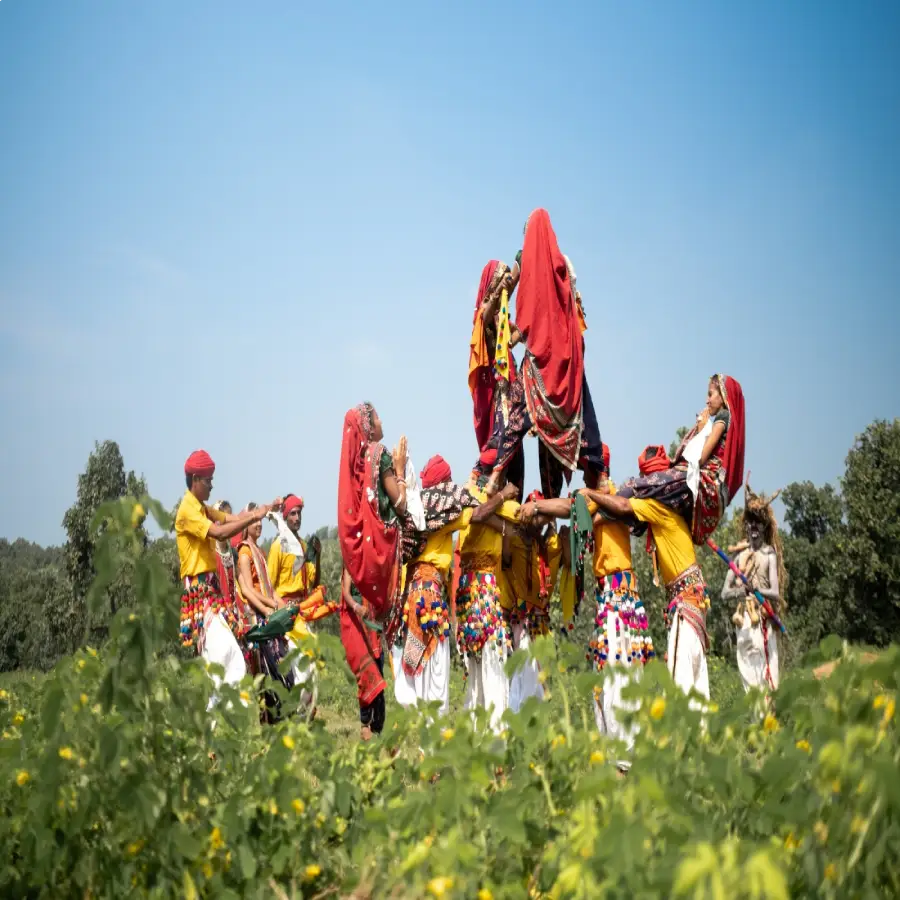State
Tribe Name
Art Type
short description
The Rathwa Dance, also known as the Holi Dance, is a traditional performance of the Rathwa tribe in Chotaudepur district, Gujarat. This is a vibrant dance celebrating Holi - the preparations start ten days before it. The entire atmosphere fills with thundering sounds of big drums and thalis. The village will reverberate with the drumbeats of the Rathwa tribe, who have a beautiful synthesis of music, dance, and spirituality into the engrossing lively and festive ambience. It showcases their cultural heritage and community spirit.
Thumbnail

Filter Postion
Left
Filter Background
Off
Theme
Filter Header Image

content
Image

description
The Rathwa Dance, also known as the Holi Dance, is a traditional performance of the Rathwa tribe in Chotaudepur district, Gujarat. This is a vibrant dance celebrating Holi - the preparations start ten days before it. The entire atmosphere fills with thundering sounds of big drums and thalis. The village will reverberate with the drumbeats of the Rathwa tribe, who have a beautiful synthesis of music, dance, and spirituality into the engrossing lively and festive ambience. It showcases their cultural heritage and community spirit.
Image Mode
landscape
Image

description
The Rathwa celebrate the Holi festival in recognition of Mata Holi and their other traditional deities. These celebrations take place through dancing and singing while playing instruments, as they invoke blessings for prosperity, health, and success in agriculture. This occasion has a spiritual value, which they hold so dear, comprising men and women dressed in their traditional costumes. The Holi Dance does not only signify the importance of the festival; it also strengthens feelings of belongingness for people of the Rathwa tribe while at the same time presenting a canvas of their rich cultural identity.
Image Mode
landscape
Image

description
The performance context for the Rathwa dance is vibrant and lively. Festival celebrations start around ten days before the actual day of Holi, as the local community meets in their neighborhoods at night to dance and sing Holi songs. The participants wear new traditional attire and dance in groups, which adds to an exuberant celebration. These gatherings suture families and friends together, where good wishes are exchanged. The fairs during Holi also become a venue where boys and girls can meet and find suitable partners, creating a very interesting dimension to the celebrations.
Image Mode
landscape
Image

description
Attire occupies a pivotal role in Rathwa dance and performances in this art form would be effective only when one wears the traditional dress appropriate to one's cultural identity. Men wear colorful turbans, dark-polished shirts, embroidered Bharatdars, worn by white dhotis, silver bracelets, and intricate belts: women drape dark clothes along with colorful handkerchiefs and adorn with traditional silver jewelry like Vedla and bangles. The fabric is generally cotton, bright and cheerful, bringing a pride and heritage recognition for the Rathwa tribe from where they basically come, which is equally important for their identity preservation.
Image Mode
landscape
Image

description
The Rathwa dance throbs with life, and music and instruments form a mainstay of this vigor. The primary instruments are the big drum, thali, and trumpet. Made from local woods, especially teak and mahuda, the Rathwa tribe makes drums using traditional crafting methods passed on over the centuries. The thali, made from brass or bronze, is beaten with wooden sticks and produces rhythmic sounds that accompany the dance. Sharnais are also made out of bamboo by local craftsmen, they are a unique contribution to the ambiance of Rathwa dance.
Image Mode
landscape
promoted
Off
Verified
On
